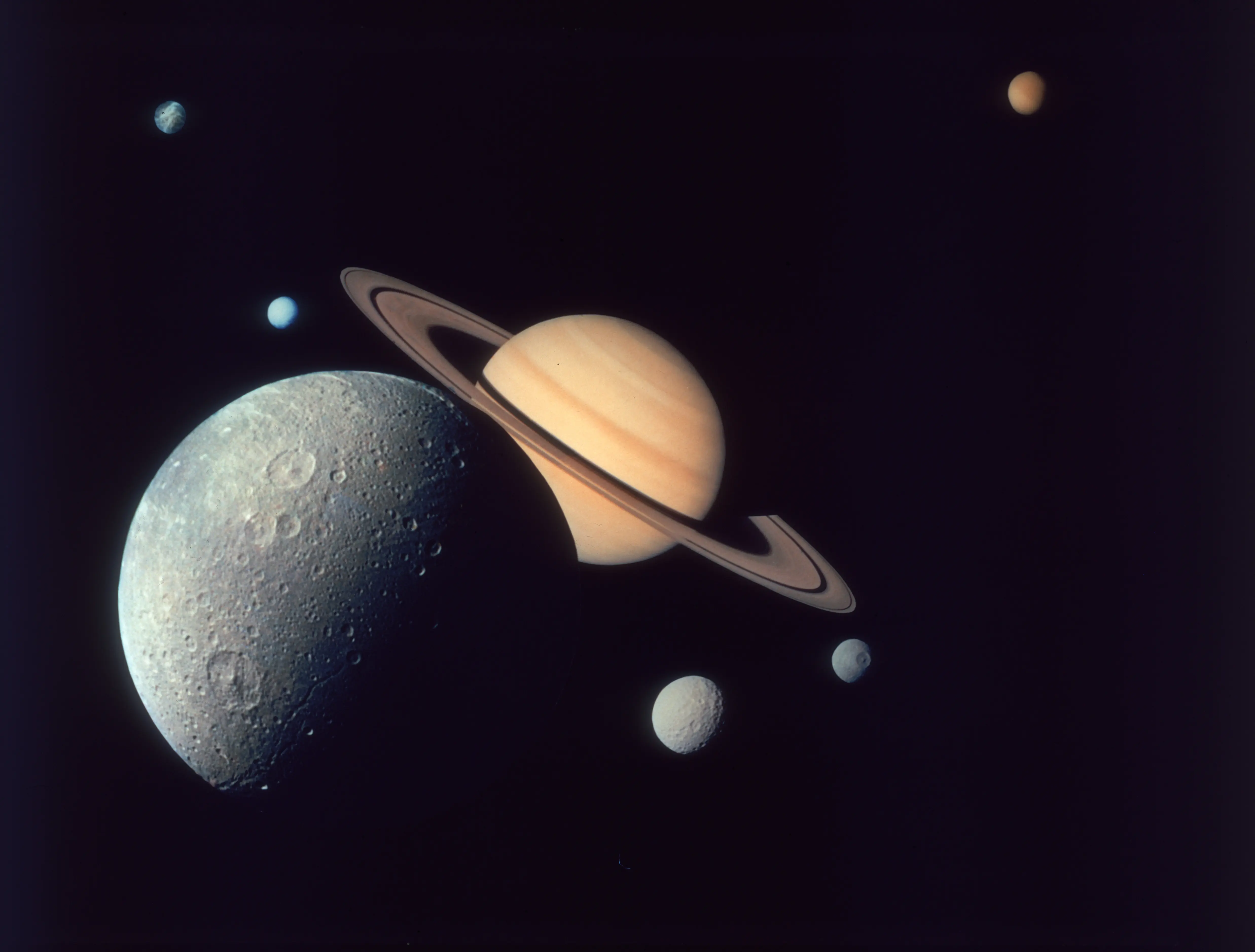The Moon cozies up to Jupiter in the sky tonight, October 13, 2025 — here’s what time to look up
-
 A montage of Saturn and its moons Dione (front), Tethys and Mimas (right), Enceladus and Rhea (left), and Titan (distant top), as depicted by the Voyager 1 spacecraft, November 1980. (Photo by Space Frontiers/Hulton Archive/Getty Images)
A montage of Saturn and its moons Dione (front), Tethys and Mimas (right), Enceladus and Rhea (left), and Titan (distant top), as depicted by the Voyager 1 spacecraft, November 1980. (Photo by Space Frontiers/Hulton Archive/Getty Images)Sky gazers everywhere can enjoy a bright view tonight, October 13, 2025, when the Moon will come close to Jupiter in the night sky. The phenomenon, which can be observed with the naked eye, will cause two of the brightest objects in the sky to appear side by side.
According to astronomers, the conjunction will start soon after sunset and continue for several hours, presenting an unobstructed and dramatic spectacle to anyone with clear weather and an open horizon.
The heavenly convergence of the Moon and Jupiter
The Moon will be waxing gibbous, with more than half of its face lit up but not yet at full Moon. Jupiter, currently one of the brightest objects in the sky from Earth, will appear as a bright dot just above or to the side of the Moon, depending on the local observing conditions. The two will be just a few degrees apart, causing them to look quite close.
In India, as in much of Asia, the pairing should be perceptible beginning at about 7:30 p.m. local time, shortly following twilight. Viewers in the United States will have the chance to see it later in the evening, depending on their time zone. Binoculars or a telescope will be helpful, but not necessary, to enhance the experience.
How to see the Moon–Jupiter conjunction
To see the Moon and Jupiter together, astronomers should gaze eastward after sunset. As the evening wears on, the two will rise higher before slowly moving westward during the night. Astronomers say that both objects' brightness makes them readily visible even in light-polluted locations. For small-telescope users, the sighting may be especially rewarding.
The craters of the Moon and the largest four moons of Jupiter — Io, Europa, Ganymede and Callisto — might all be seen. Provided that the weather holds, this easy alignment is a way for both beginners and seasoned observers to engage with the nighttime sky.
Why do these conjunctions occur?
This kind of thing happens every night as part of a normal astronomical pattern called a conjunction, where two bodies in the sky are seen together in our line of sight. Although the Moon and Jupiter are separated by hundreds of millions of kilometres, their lying in the same line of sight gives them an illusion of being close to one another.
These conjunctions occur frequently but always impressively, for the Moon's monthly passage through the sky frequently places it close to bright planets such as Jupiter, Saturn or Venus. The pairing of Jupiter's steady light with the Moon's provides a modest but compelling sight.
As the Moon and Jupiter wander together this evening, the view provides another reminder of just how dynamic and interrelated the solar system really is. No special occasion or gear is needed, but instances like this reveal the beauty of simply looking up. For observers of the sky, the Moon's gradual passage by Jupiter represents another page in the ever-present dance of the nighttime sky — one that is visible to anyone willing to stop and take a moment to look.
TOPICS: Moon